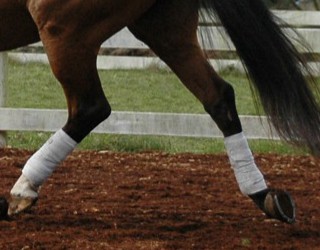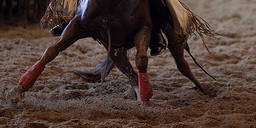Show season is here. High temperatures, long sunny days, and weekends full of shows, competitions, races, and more for you and your performance horse. Innumerable hours of practice in the saddle have prepared you both for whatever level of competition you perform in – from novice to professional – and you need your equine athletic partner to perform at the top of their game.
But what if your horse isn’t performing to the top of their ability? Although there can be many different reasons for a horse to perform sub- optimally at a competition (see our posts about gastric ulcers for one of the more common reasons for this), competition horse lameness is often caused by either osteoarthritis (OA-inflammation in the joints from overuse or exercise) and/or synovitis (inflammation in the joint capsule) in the hock joints. Whether it is a subtle lameness or performance decrease, or a more marked behavioral change, inflammation in the hock joints can ruin a whole weekend, or just keep you out of the prize money or from winning a ribbon.
The equine hock joints are actually a series of joints, put together very much like our own ankle joints. The “high motion” joint, known as the tarso-crural or tibiotarsal joint, isn’t as frequent of a problem for competition horses, unless it is injured and has swelling and joint effusion present. The more common site of OA in the hind legs is actually the combination of the lower two joints of the hocks, the distal intertarsal joint and the tarsometatarsal joint. These two joints are considered “low-motion” joints as they do not behave in the manner of their higher motion neighbor. They are, however, critical in stopping, turning, jumping and many of the other activities we ask our horses to perform.
Inflammation in these joints can show up as a marked lameness, a refusal to perform certain actions, lower back soreness in the lumbar area, or just an overall cranky horse. If arthritis is diagnosed in these joints, the best course of action is to inject them. We here at Mobile Veterinary Services, LLC use a corticosteroid along with an anti-biotic to reduce the inflammation in the joint and the capsule directly and achieve the best and fastest return to competition. This has the added effect of improving the inflammation and overall joint health, as well as helping the horse to feel THEIR best while competing.
Whether you think your horse needs a show season “tune-up” or you are noticing a decrease in their ability to perform or in the results that you are getting at your show, don’t forget the always important hock joints. Healthy and happy hock joints could be the difference between winning and going home without a prize!



![By Timdnz [Public domain], via Wikimedia Commons](http://www.mvsequine.com/wp-content/uploads/2013/06/Xc_water_jump-e1371148817790.jpg)


